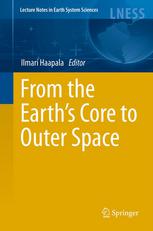

Most ebook files are in PDF format, so you can easily read them using various software such as Foxit Reader or directly on the Google Chrome browser.
Some ebook files are released by publishers in other formats such as .awz, .mobi, .epub, .fb2, etc. You may need to install specific software to read these formats on mobile/PC, such as Calibre.
Please read the tutorial at this link: https://ebookbell.com/faq
We offer FREE conversion to the popular formats you request; however, this may take some time. Therefore, right after payment, please email us, and we will try to provide the service as quickly as possible.
For some exceptional file formats or broken links (if any), please refrain from opening any disputes. Instead, email us first, and we will try to assist within a maximum of 6 hours.
EbookBell Team

4.8
94 reviewsFrom the Earth's Core to Outer Space focuses on four themes: (1) Evolving Earth’s crust, (2) Changing Baltic Sea, (3) Climate Change, and (4) Planet Earth, third stone from Sun. The focus on these four topics provides both a state of the art review of earth science topics of particular importance to Scandinavia and the Baltic and also the global context in which a consideration of these topics must be made. It finishes by discussing our use of space born technologies for understanding these topics and places the Earth within the context of our neighbouring planets and their satellites.
The first theme includes papers on the structure, origin and evolution of the Earth’s crust and in particular the ore deposits in Fennoscandia, plate-tectonic drift of Fennoscandia (Baltica), and postglacial isostatic rebound of the crust. The second theme contains papers dealing with changes in the ice season of the Baltic Sea, inflow and stagnation in deep basins, biology of the Baltic Sea, and carbon dioxide balance in sea water. The third theme deals with origin and evolution of oxygen in atmosphere, postglacial climate change, effects of aerosols and greenhouse gases on climate, interplay between anthropogenic and natural factors in the current climate change, and Earth’s water resources. The fourth theme includes articles on Earth’s space environment, use of satellites in cartography and geodesy, information obtained by space probes on Mars and other planets and their moons, and possibilities to find life on them.